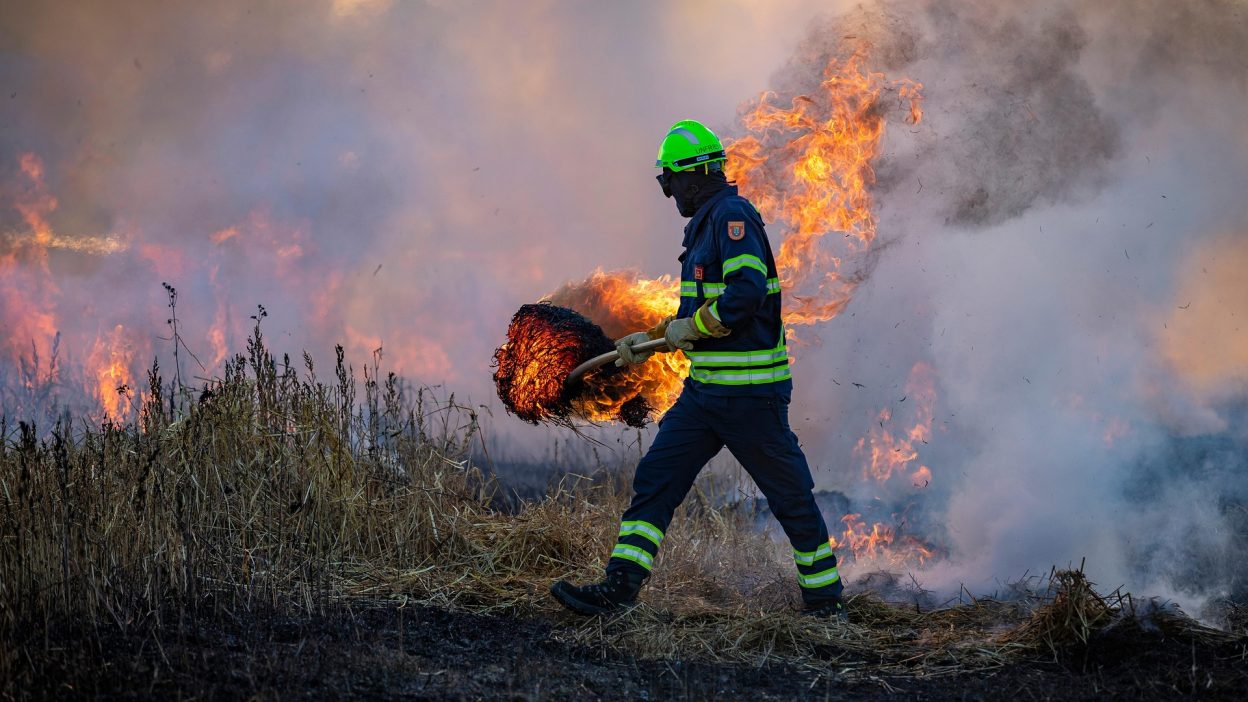Australia’s Worst Bushfire Disaster – Government Failures, Human Cost, And The Road To Recovery
The Black Saturday bushfires that ravaged Victoria, Australia, on February 7, 2009, are forever etched in the nation’s memory as one of the most devastating and catastrophic events in modern Australian history. This fiery catastrophe spread across vast swathes of land, with flames leaping to unimaginable heights and the entire state gripped by an intense, all-consuming blaze. What followed was a sorrowful tale of loss, destruction, and heartache.
The fires struck as the region experienced the most extreme temperatures and strong winds seen in over a century. The sweltering heat soared above 46°C (115°F), creating the ideal conditions for fires to spread quickly and uncontrollably. It was a tragic day for Australia, one that led to unimaginable suffering. The fires resulted in the deaths of 173 people, the destruction of over 2,000 homes, and the devastation of more than 3,500 square kilometres of land. More than just a loss of material possessions, these fires brought irreparable pain to the families, communities, and regions affected.
Did the Government Do Enough? A Deep Dive Into the Official Response
In the aftermath of the Black Saturday bushfires, many began questioning whether the Australian government had been prepared for such an unprecedented disaster. Were authorities proactive in their approach, or did they fail to act in time to save lives and property? This remains a contentious topic, with many critics pointing to lacklustre preparedness and delayed reactions as major factors contributing to the scale of the disaster.
Warnings of high fire danger had been issued prior to the disaster, but many residents felt that these alerts were not adequately communicated, particularly in rural areas. Some have argued that there was a lack of clarity and that crucial information was either ignored or downplayed. Additionally, the firefighting resources available at the time were insufficient given the scale of the fires. While firefighters and volunteers did their best to control the blazes, the extreme weather conditions created a situation that was beyond anyone’s expectations.
As the fires raged, the government’s response to the disaster faced severe scrutiny. Survivors and victims of the bushfires accused local authorities of slow action, particularly in the delivery of aid and in the relocation of displaced residents. The rebuilding process was equally controversial, with some communities claiming that they were neglected during the recovery phase. Financial aid was delayed, and many survivors were left to fend for themselves during the early stages of the rebuild.
Lives Lost, Families Shattered: The Devastating Human Toll of Black Saturday
- 173 confirmed deaths: The tragic loss of life was the most significant aspect of Black Saturday, with 173 victims succumbing to the flames or the heat.
- Over 400 people injured: The fires left hundreds with severe burns and life-changing injuries. Many were hospitalised in critical conditions and required long-term care.
- 2,029 homes destroyed: The fires left over 2,000 families without homes. Entire communities were reduced to rubble.
- Over 3,500 square kilometres of land burned: The inferno tore through farmlands, forests, and towns, leaving behind a desolate landscape of scorched earth.
- Thousands left homeless and displaced: With no homes to return to, thousands of people were forced to seek shelter in emergency camps and makeshift housing.
The impact of the Black Saturday bushfires extends far beyond the immediate death toll. While the numbers give a sense of scale, they fail to convey the deep emotional toll taken on those who survived. Entire communities were left devastated—homes, businesses, and local landmarks disappeared in the blink of an eye, leaving survivors in shock and disarray. Many of the deceased were not just names on a list but loved ones lost to a catastrophe that struck with brutal and terrifying speed.
Survival Against All Odds: Stories of Bravery and Resilience
Amid the horror of Black Saturday, countless stories of courage and determination emerged. Many individuals went above and beyond to help their fellow Australians, even at great personal risk. Firefighters, volunteers, and even ordinary citizens displayed extraordinary heroism in their efforts to save lives and protect property.
One such story is that of a group of firefighters who, despite the overwhelming heat and dangerous conditions, risked their lives to rescue trapped residents. These brave men and women worked tirelessly, forming a human chain in some cases, to save as many people as they could. Meanwhile, local communities banded together to assist one another, even when faced with personal loss. Neighbours helped neighbours, farmers saved animals, and people supported each other through the darkest hours.
The bravery of many individuals was not just seen in life-saving efforts but also in the relentless spirit of survival. Many survivors recount how they fought against the odds to escape the raging infernos. People ran through walls of fire, hid in swimming pools, and even crawled on their hands and knees to safety. These courageous acts of survival will forever be etched in the history of Black Saturday as examples of human endurance against nature’s ferocity.
The Role of Climate Change: Is Global Warming to Blame?
One of the most discussed aspects of the Black Saturday bushfires was the role that global warming and climate change played in intensifying the fires. Several experts believe that rising global temperatures and increased atmospheric instability played a significant role in the severity of the fires. The combination of extreme heat, strong winds, and drought-like conditions in the months leading up to the fires created a perfect storm for a disaster of this magnitude.
Experts argue that climate change has led to increased bushfire frequency, particularly in Australia, where the environment is highly susceptible to extreme weather events. Heatwaves have become more common in recent years, creating dry conditions and elevating the risk of fires. Additionally, the high winds on Black Saturday only helped fuel the flames, causing them to spread faster and with more ferocity. While it’s difficult to attribute the fires directly to climate change, many scientists argue that the changing climate exacerbated the conditions, making them far worse than they would have been otherwise.
Despite the evidence supporting this theory, the debate over climate change continues, with some questioning whether the natural occurrence of bushfires is merely part of Australia’s landscape. While climate change undeniably contributed to the severity and intensity of the fires, it is clear that the Australian government and emergency services must take further steps to address the changing climate in the future.
The Cost of History: How Black Saturday Became the Worst Fire Disaster Australia Has Ever Known
The Black Saturday bushfires of 2009 will forever remain Australia’s deadliest and most destructive bushfire event. The number of casualties, the size of the area burned, and the scale of devastation set Black Saturday apart from previous disasters.
Historically, Australia has been prone to bushfires, with Ash Wednesday in 1983 and Black Friday in 1939 being among the most memorable. However, Black Saturday surpassed all previous disasters due to the sheer scale of its destruction. 173 lives lost, over 2,000 homes destroyed, and thousands of people displaced set this disaster apart in terms of magnitude. The fires did not just affect remote rural areas—they struck suburban towns and major roads, impacting both the urban and rural population alike.
Experts agree that the combination of factors—intense heat, drought conditions, and fierce winds—created the perfect environment for the fires to spread with devastating speed. Although bushfires are a common occurrence in Australia, the scale and ferocity of Black Saturday raised concerns about how the country is preparing for such extreme weather events in the future.
Negligence or Nature? An Investigation Into the Causes of the Black Saturday Fires
As the fires were extinguished and the damage assessed, many turned their attention to the causes of the Black Saturday fires. The fires were caused by a mixture of natural and human factors, with arson playing a significant role in igniting several of the fires. While lightning strikes are often the culprit in bushfires, it was reported that several fires were intentionally started by arsonists, and investigations into these crimes were launched immediately.
Another contributing factor was the state of the land management. In areas where controlled burns could have reduced the amount of combustible material, there was inadequate planning and lack of resources for proper bushfire prevention measures. Critics argue that the government and local authorities could have done more to ensure that the environment was better prepared for such a catastrophic event.
While the direct causes of the fires remain a topic of investigation, the broader question remains: Could this catastrophe have been prevented with better land management, firebreaks, and early intervention?
The Aftermath: Was the Government’s Recovery Effort Effective?
Following the fires, the process of recovery was slow and painful. Many survivors were frustrated by the lack of government support and the slow pace of rebuilding. The financial aid promised to victims came in stages, with many families struggling to rebuild their homes and lives in the initial aftermath. Government corruption allegations also emerged, as some claimed that the funds meant to help were mismanaged.
In the wake of such destruction, the government had a responsibility to act quickly. However, survivors were left feeling abandoned as they faced the emotional and physical toll of rebuilding. The rebuilding process also exposed significant flaws in Australia’s disaster recovery systems. Communities complained of poor communication and delays in compensation, and the perception grew that authorities failed in their duty to help those most affected by the fires.
Are We Prepared for the Next Bushfire Crisis?
As Australia continues to recover from Black Saturday, many are questioning whether the country is better prepared for future bushfire seasons. While the government has implemented improvements in firefighting infrastructure and early warning systems, experts argue that greater investment is needed to ensure that future disasters are mitigated.
Given the increasing frequency of extreme weather events and the effects of climate change, it is essential that Australia invests in
disaster preparedness to cope with the challenges ahead. Whether it’s improving fire safety measures, updating building codes, or creating better emergency response teams, it is clear that more must be done to protect lives and property.
Conclusion: The True Legacy of Black Saturday
The Black Saturday bushfires left an indelible mark on the history of Australia. The lives lost, the communities devastated, and the lessons learned will stay with the country forever. As Australia faces an uncertain future marked by climate change and more frequent disasters, it is imperative that the country learns from its past mistakes. Black Saturday was a wake-up call—a moment of reckoning that forced the nation to confront its vulnerability and its resilience. In the face of unimaginable loss, Australia has proven its strength and determination to rebuild and recover.The legacy of Black Saturday is not just one of destruction but also of resilience. It is a story of survival, community spirit, and unwavering bravery. By understanding the mistakes of the past, Australia can better prepare for future disasters, ensuring that the next generation will not have to face the same devastation.




